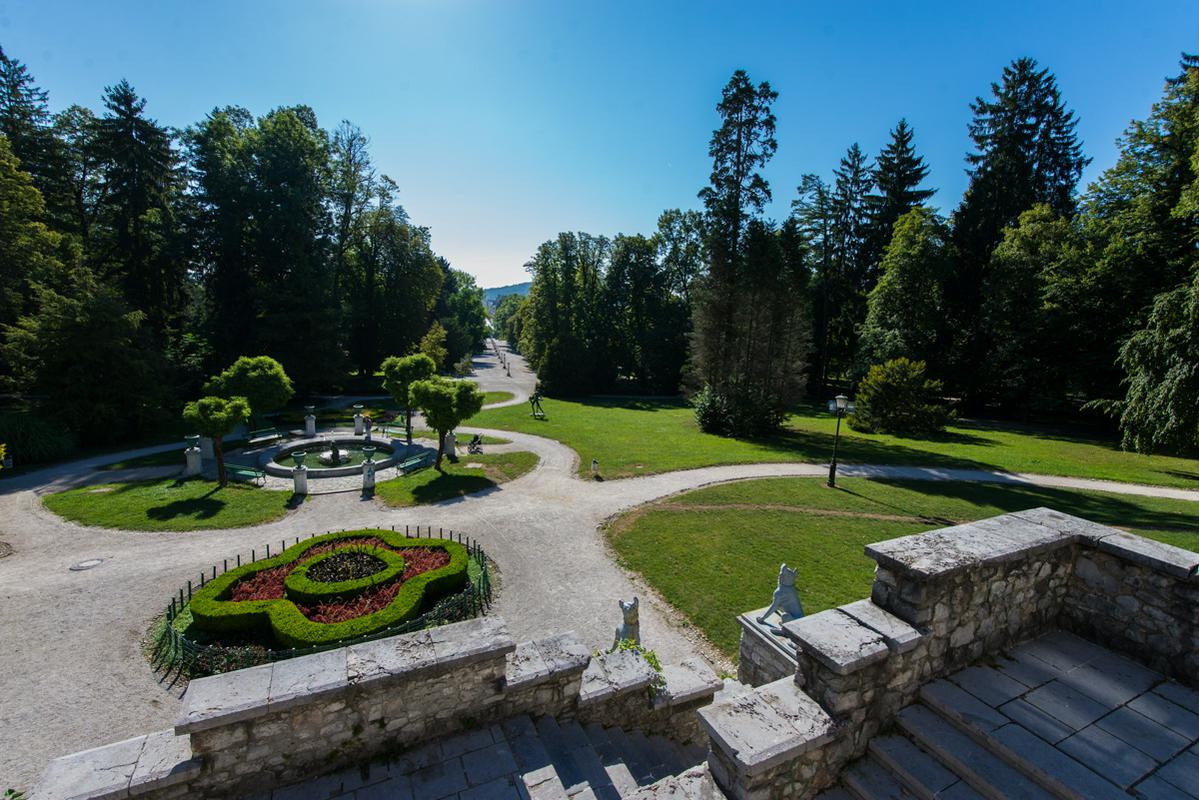
It may not be as famous as its namesake in Copenhagen, but Ljubljana’s Tivoli Park is one of the most celebrated features of the Slovenian capital. It connects the central part of the city with the forested slopes of the Rožnik hill and extensive woodland beyond. Just a few blocks from the city’s busiest streets, Ljubljana’s families can enjoy a tranquil landscape of ponds, tree-lined lanes, flower gardens, and playgrounds.
Tivoli Park has its origins in an extraordinary period of Slovenian history. In the early 19th century, Ljubljana found itself under French occupation and became the capital of Napoleon’s Illyrian Provinces, which stretched from Tyrol all the way to present-day Montenegro. It was during that time that the authorities decided to create a new park in their new regional capital.
In 1813, a French engineer by the name of Jean Blanchard came up with plans for Tivoli Park. He used the gardens of two Ljubljana mansions as the basis for the park; he connected them and established a large area set aside for the city’s residents. It was Blanchard who designed many of Tivoli’s tree-lined lanes and flower gardens, but the park got its present appearance gradually, over the course of many decades.
One of the first major additions came in 1880, when a fish pond was constructed in the southern part of the park. The pond was soon followed by an adjacent tropical greenhouse, and both features continue to draw visitors to Tivoli.
But it was Slovenia’s most famous architect, Jože Plečnik, who left one of the greatest marks on Tivoli. In the 1920s and ‘30s, the designed the park’s central promenade, adorning it with his characteristic, vaguely neo-classical lampposts. The promenade connected Tivoli with the city itself, which had also been reshaped by Plečnik’s inventive architectural style.
The post-World War II era, marked by a drive towards “progress” on all fronts, proved to be a mixed blessing for Tivoli. On the one hand, the increasingly hectic pace of life in the city ensured that the park remained an object of affection to Ljubljana’s people, who could always find some respite in its greenery. On the other hand, the growth of the city cut into the park itself. An urban expressway broke the connection of the park to the city streets – the very connection that Plečnik had cultivated decades earlier. People now had to walk through an underpass to get to the park. And a sports hall, while providing useful facilities, was later criticized for being misplaced in the very heart of Tivoli.
Still, Tivoli remains an unmitigated success. Gone are the stern wardens who once shooed people off the park’s lawns. Today, young and old enjoy every centimeter of Tivoli and cannot image Ljubljana without its park – all thanks to a dream from more than two centuries ago.

































































